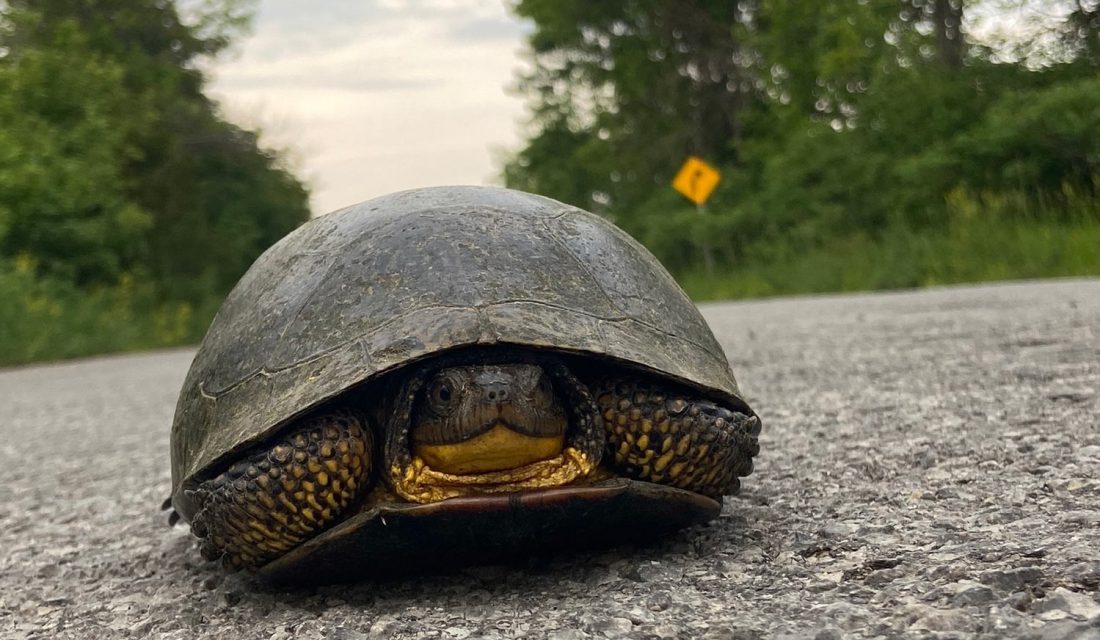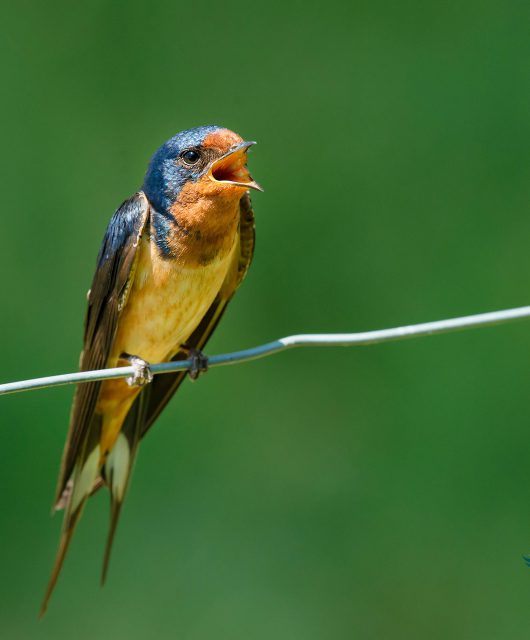Here at the Canadian Wildlife Federation, we love all turtles, but the Blanding’s Turtle is special.
Here’s why:

1. A Striking Reptile
It is a strikingly attractive turtle with its high, domed shell and bright yellow chin and throat. In Ojibway, the name of the turtle translates to the turtle with the sun under its chin, a reference to a traditional story of the turtle rescuing the sun and returning it to the sky. From carrying the sun in its mouth, the turtle was left with the permanent glow of the sun on its neck and chin.
2. A Moderate Turtle
While many turtles like it hot, the Blanding’s Turtle prefers more moderate temperatures. The species is mainly found around the Great Lakes region and is not found farther south than Ohio. In contrast, the Painted Turtle, which is widespread in southern Canada, is found as far south as the southern U.S. As a result of the Blanding’s Turtle’s northern distribution, roughly 20 per cent of its global range is found in Canada.
3. Wandering Wetlands
Blanding’s Turtles like to wander. One Blanding’s Turtle can make use of more than a dozen different wetlands over the course of a year. The area one Blanding’s Turtle uses over the course of a year can be more than three kilometres long. Such movements mean that turtles may have to cross roads to get from one wetland to another. And every road crossing brings with it the risk of being hit and killed by a car.
4. Long-lived Species
Blanding’s Turtles really exemplify life in the slow lane. It can take 20 years or longer for a female Blanding’s Turtle to be old enough to breed and lay eggs. Adults can live for more than 80 years in the wild. It is important for turtles to live a long time, and for females to lay eggs over many years, to make up for the high rate of nests being predated and the low survivorship of juveniles.
5. Needs Our Help
One unfortunate reason the Blanding’s Turtle is special is that it is a globally endangered species. It is not just endangered in Canada, but across its entire range.
How Can We Help?

How can we make sure this special turtle will persist into the future? We can all do our part. If you see a Blanding’s Turtle trying to cross a road, if it is safe to do so, stop and help it across the road in the direction it is heading. Blanding’s Turtles are gentle creatures and in my many years working with them I have never had one even attempt to bite me.
If you are lucky enough to have Blanding’s Turtles nesting on your property, consider making and installing nest protectors to keep the eggs safe from predators. You can download our guide to making a nest protector from our website. If you find a Blanding’s Turtle nesting in the Ottawa area, please let us know as we collect and incubate their eggs to increase the chance of the eggs hatching successfully.
Consider volunteering for a turtle conservation group. If you live in Ontario, check out the Ontario Turtle Conservation Network for lists of turtle conservation groups.
Report your observations of any Blanding’s Turtle to iNaturalist. A single observation of a Blanding’s Turtle can protect the nearby wetland habitat if this is the first observation in an area. If it is on a road, please add a comment such as AOR (for alive on road) or DOR (dead on road). This helps us to identify observations that are on roads and better understand where roads are a major threat to Blanding’s Turtles.




6 comments
I found a Blanding turtle today in Haley Station, Ontario, in the Muskrat water system. I helped him/her across the Algonquin Trail.
Found one crossing bacon rd in minden hills ontario
Blandings turtles frequently observed outside killaloe Ontario crossing highway 62 with the killaloe wetlands situated on both sides. Roadkill prolific, but mostly painted turtles in the same area. Other roads have similar rates of roadkill. Local council needs to install turtle crossing signage on municipal old roads where research indicates high turtle traffic volume.
There is a large blandings turtle crossing my laneway right now.
We have seen several blanding turtles on our property and in the area, today I helped a blanding turtle to get across the road, hopefully he or she will be safe!
Helped one today off Hwy 17 near Bonfield, ontario. He was relocated to a safe spot .